Here are some teaching packages for digital writing assignments that you are welcome to adopt or adapt for your classrooms. Please let us know how they work for you. You can comment on this page or the main page for any assignment. If you’d like to add a new package, or if you want to talk about anything here– email Sean Molloy at: seanajmolloy@gmail.com.
 “The Indirect and Immediate Benefits of Peer Review Exercises.” (Sean Molloy 14 Sep. 2015) This package is drawn from teacher workshops at Hunter College and the Grad Center in 2012 and 2014.
“The Indirect and Immediate Benefits of Peer Review Exercises.” (Sean Molloy 14 Sep. 2015) This package is drawn from teacher workshops at Hunter College and the Grad Center in 2012 and 2014.
 “Collaborative Google Doc Class Notes” (Sean Molloy 13 Sep. 2015) *Under Construction* Teams of students take turns maintaining class notes in google docs to share with the whole class.
“Collaborative Google Doc Class Notes” (Sean Molloy 13 Sep. 2015) *Under Construction* Teams of students take turns maintaining class notes in google docs to share with the whole class.
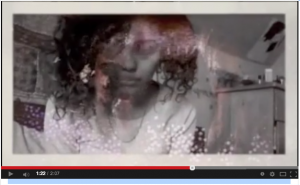 “3 Minute Movie Version of a Text Essay” (Sean Molloy 21 Aug. 2014.) Students apply the same thesis question they have developed for a text essay to a three minute movie version which they publish to an internet platform.
“3 Minute Movie Version of a Text Essay” (Sean Molloy 21 Aug. 2014.) Students apply the same thesis question they have developed for a text essay to a three minute movie version which they publish to an internet platform.
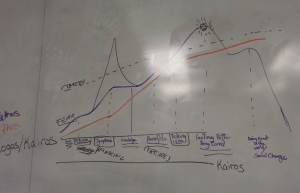 “Rhetorical Roller Coasters” (Sean Molloy 21 Aug. 2014.) After reading Dona Cooper’s “Film’s as Roller Coasters,” students create rhetorical roller coasters that gauge the intensity of rhetorical appeals in their own movie projects.
“Rhetorical Roller Coasters” (Sean Molloy 21 Aug. 2014.) After reading Dona Cooper’s “Film’s as Roller Coasters,” students create rhetorical roller coasters that gauge the intensity of rhetorical appeals in their own movie projects.
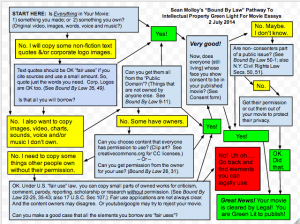 “IP Path to Green Light” (Sean Molloy 23 Aug. 2014.) Students read graphic novel Bound By Law? and then review intellectual property concepts in order to “clear rights” and “green light” their movie projects for publication.
“IP Path to Green Light” (Sean Molloy 23 Aug. 2014.) Students read graphic novel Bound By Law? and then review intellectual property concepts in order to “clear rights” and “green light” their movie projects for publication.
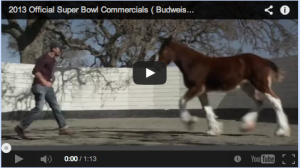 “Rhetorical Reading of a Super Bowl Ad or Student Movie” (Sean Molloy 24 Aug. 2014.) Students read Lara Bolin Carroll’s 2010 “Backpacks vs. Briefcases” and use the rhetorical concepts explained there to analyze the rhetoric in Super Bowl ads or student movies.
“Rhetorical Reading of a Super Bowl Ad or Student Movie” (Sean Molloy 24 Aug. 2014.) Students read Lara Bolin Carroll’s 2010 “Backpacks vs. Briefcases” and use the rhetorical concepts explained there to analyze the rhetoric in Super Bowl ads or student movies.
 “Collaborative Research Project on Discourse Communities” (Andrew Laudel 24 Aug. 2014.) After reading John Swales’ “The Concept of Discourse Community,” students work in pairs to identify and analyze a particular discourse community and examine how texts mediate activity within that community.
“Collaborative Research Project on Discourse Communities” (Andrew Laudel 24 Aug. 2014.) After reading John Swales’ “The Concept of Discourse Community,” students work in pairs to identify and analyze a particular discourse community and examine how texts mediate activity within that community.
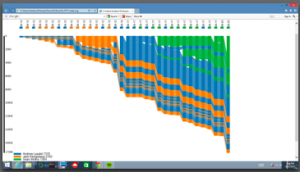 “Docuviz Process Analysis” (Andrew Laudel 24 Aug. 2014.) Students use the Google Docs revision history tool and DocuViz visualization maps to graphically depict and meta-analyze their own patterns of contribution, collaboration, and revision.
“Docuviz Process Analysis” (Andrew Laudel 24 Aug. 2014.) Students use the Google Docs revision history tool and DocuViz visualization maps to graphically depict and meta-analyze their own patterns of contribution, collaboration, and revision.
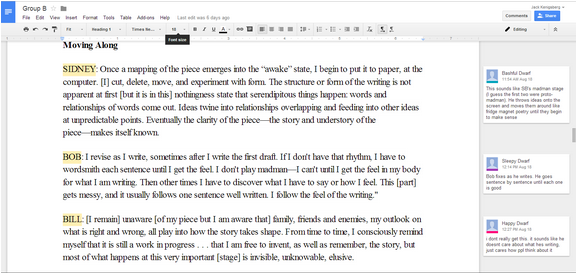 “Collaborative Commenting as Reading Annotation” (Jack Kenigsburg 25 Aug. 2014.) Students collaboratively annotate Orlean Anderson’s “The Writing Process Rejected” using the “Insert Comment” feature on Google Docs.
“Collaborative Commenting as Reading Annotation” (Jack Kenigsburg 25 Aug. 2014.) Students collaboratively annotate Orlean Anderson’s “The Writing Process Rejected” using the “Insert Comment” feature on Google Docs.

